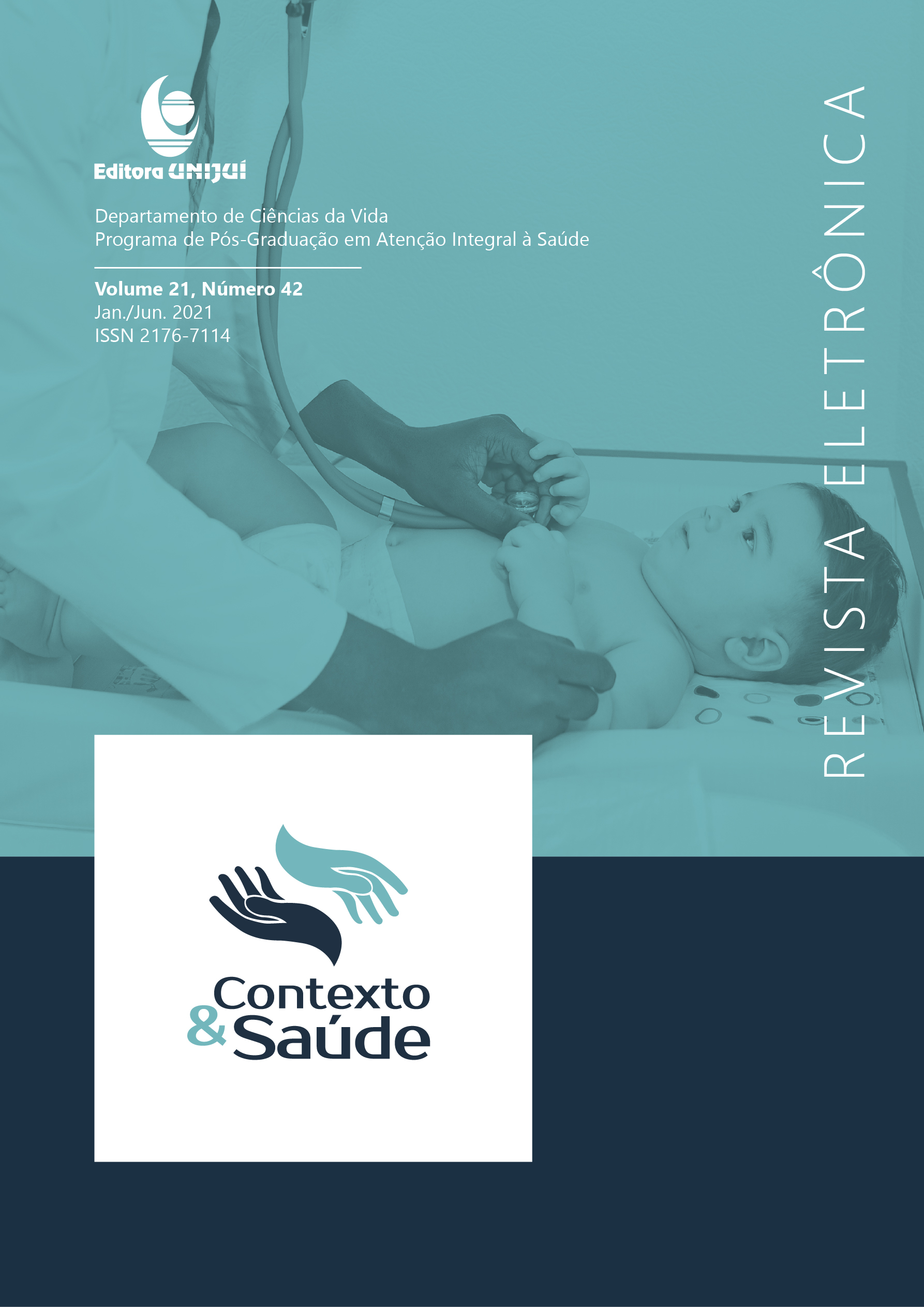EFEITOS DA NEUROMODULAÇÃO NA FADIGA DE INDIVÍDUOS COM ESCLEROSE MÚLTIPLA: UMA REVISÃO SISTEMÁTICA
EFFECTS OF NEUROMODULATION ON FATIGUE IN INDIVIDUALS WITH MULTIPLE SCLEROSIS: A SYSTEMATIC REVIEW
DOI:
https://doi.org/10.21527/2176-7114.2021.42.11675Keywords:
Estimulação Transcraniana por Corrente Contínua, Esclerose Múltipla, FadigaAbstract
RESUMO: A esclerose múltipla (EM) é caracterizada por neurodegeneração no sistema nervoso central. Dentre os sintomas mais prevalentes está a fadiga, na qual a estimulação transcraniana por corrente contínua (ETCC) tem mostrado resultados promissores na sua redução. Nesse sentido, objetivou-se analisar o estado da arte sobre a eficácia da aplicação da ETCC para melhora da fadiga em indivíduos com EM. Realizou-se uma revisão sistemática, nos meses de junho e julho de 2020. Utilizaram-se as bases de dados da PubMed, BVS, SciELO, Cochrane e Science Direct, com os descritores: "Transcranial Direct Current Stimulation” AND “Multiple Sclerosis”. Foram incluídos estudos com adultos, que abordaram os efeitos da ETCC nos sintomas de fadiga como desfecho primário ou secundário. Observou-se que a estimulação mostrou melhores resultados para a fadiga na EM quando aplicada sobre o córtex pré-frontal dorsolateral esquerdo, com intensidade entre 1,5 mA e 2,0 mA, durante dias consecutivos, em número maior que cinco sessões. A ETCC pode ser considerada um recurso terapêutico que promove benefícios consideráveis no tratamento da fadiga em pessoas com EM, refletindo em melhora da qualidade de vida desses indivíduos. A aplicação da ETCC supervisionada remotamente pode ser uma alternativa para potencializar os resultados.
Downloads
Published
How to Cite
Issue
Section
License

This work is licensed under a Creative Commons Attribution 4.0 International License.
By publishing in Revista Contexto & Saúde, authors agree to the following terms:
The works are licensed under the Creative Commons Atribuição 4.0 Internacional (CC BY 4.0) license, which allows:
Share — to copy and redistribute the material in any medium or format;
Adapt — to remix, transform, and build upon the material for any purpose, including commercial.
These permissions are irrevocable, provided that the following terms are respected:
Attribution — authors must be properly credited, with a link to the license and indication of any changes made.
No additional restrictions — no legal or technological measures may be applied that restrict the use permitted by the license.
Notes:
The license does not apply to elements in the public domain or covered by legal exceptions.
The license does not grant all rights necessary for specific uses (e.g., image rights, privacy, or moral rights).
The journal is not responsible for opinions expressed in the articles, which are the sole responsibility of the authors. The Editor, with the support of the Editorial Board, reserves the right to suggest or request modifications when necessary.
Only original scientific articles presenting research results of interest that have not been published or simultaneously submitted to another journal with the same objective will be accepted.
Mentions of trademarks or specific products are intended solely for identification purposes, without any promotional association by the authors or the journal.
License Agreement (for articles published from September 2025): Authors retain copyright over their article and grant Revista Contexto & Saúde the right of first publication.

